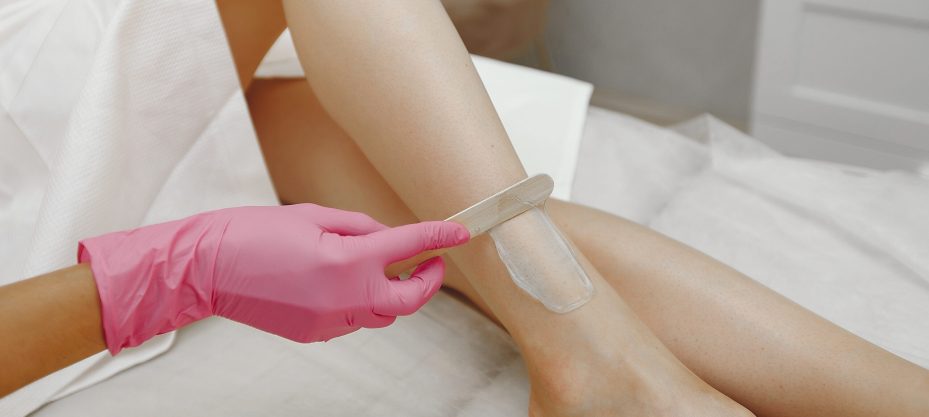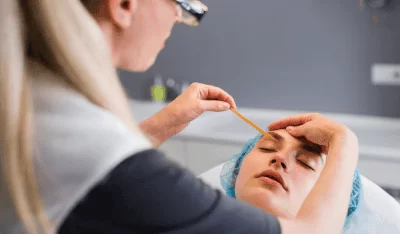Waxing hurts due to the nerve endings surrounding hair follicles, which are sensitive to touch and pain. When wax adheres to hair and skin, it stimulates these nerve endings during removal, causing discomfort. Skin type, hair thickness, and previous waxing experiences affect sensitivity levels. Skin tension and pulling during wax removal, especially in delicate areas, contribute to the pain. Techniques such as numbing creams, proper skin stretching, and quick pulling motions can help minimize discomfort. Understanding the science behind waxing pain can aid in choosing strategies to make the process more bearable. For a more comfortable experience, consider Vienna waxing professionals, who use advanced techniques and high-quality products to reduce pain and ensure effective hair removal.
Sensitivity of Hair Follicles
The heightened sensitivity of hair follicles plays a significant role in the discomfort experienced during waxing procedures. Each hair follicle is surrounded by nerve endings that can detect sensations such as touch, pressure, and pain. When wax is applied and adheres to the hair, it also attaches to the skin, pulling at the hair follicle as it is removed. This pulling action stimulates the nerve endings around the follicle, sending signals of discomfort and pain to the brain.
The sensitivity of hair follicles varies among individuals and can be influenced by factors such as skin type, hair thickness, and previous waxing experiences. Fine hair and sensitive skin may result in heightened discomfort during waxing, while coarse hair may require more forceful removal, leading to increased pain perception.
Understanding the sensitivity of hair follicles is essential in managing pain during waxing procedures. Techniques such as applying numbing creams before waxing or using quick, efficient pulling motions help minimize the discomfort associated with the process. Moreover, proper aftercare to soothe the skin post-waxing can also contribute to a more comfortable experience for the individual.
Skin Tension and Pulling
Skin tension and pulling during waxing procedures can significantly impact the discomfort experienced by individuals. When wax is applied to the skin and then quickly removed, it adheres to the hair and the outer layer of the skin. As the wax is pulled away, a significant force stretches and pulls the skin. This tension can be particularly uncomfortable in areas where the skin is thinner or more sensitive, such as the face or bikini area.
The degree of skin tension and pulling during waxing is influenced by various factors, including the type of wax used, the skill of the esthetician, and the individual’s skin type. Proper technique is essential to minimize excessive pulling, leading to skin irritation, redness, and bruising. Additionally, ensuring that the skin is taut during waxing can help reduce the discomfort associated with skin tension. Overall, being mindful of skin tension and pulling is vital in managing the pain experienced during waxing procedures.
Nerve Endings and Pain Response
Nerve endings are crucial in mediating the pain response experienced during waxing procedures. Various nerve endings, including nociceptors, are within the skin and are responsible for detecting painful stimuli. When wax is applied and removed from the skin, it stimulates these nociceptors, sending signals to the brain through the peripheral nervous system. This process triggers the sensation of pain.
Furthermore, the density of nerve endings varies across different areas of the body, influencing the perception of pain during waxing. Areas with higher nerve ending concentrations, such as the bikini area or underarms, tend to be more sensitive to pain compared to regions with lower densities, like the legs.
Additionally, the pain response during waxing can be influenced by factors such as pain tolerance, skin sensitivity, and previous experiences with waxing. Understanding the role of nerve endings in pain perception can help develop strategies to minimize discomfort during waxing procedures.
Techniques for Minimizing Discomfort
Pain management techniques are imperative in alleviating discomfort during waxing procedures, with various methods available to help minimize the pain sensation. One effective technique is the application of numbing creams or sprays containing lidocaine or benzocaine, which can desensitize the skin before waxing. These topical anesthetics block nerve signals in the skin, reducing pain perception during the procedure. Moreover, ice packs or cold compresses on the skin before waxing can help numb the area and constrict blood vessels, potentially decreasing pain sensitivity.
Another strategy to minimize discomfort is taking over-the-counter pain relievers such as ibuprofen or acetaminophen before the waxing session. These medications can help reduce inflammation and pain responses, making the experience more tolerable. In addition, practicing deep breathing exercises or guided relaxation techniques during waxing can distract the mind from the discomfort and promote a sense of calmness, potentially reducing pain perception. By employing these techniques, individuals undergoing waxing procedures can experience less discomfort and make the process more manageable.
Other Waxing Tips:
- How Long After Waxing Can You Swim
- Why Does Waxing Hurt So Much



